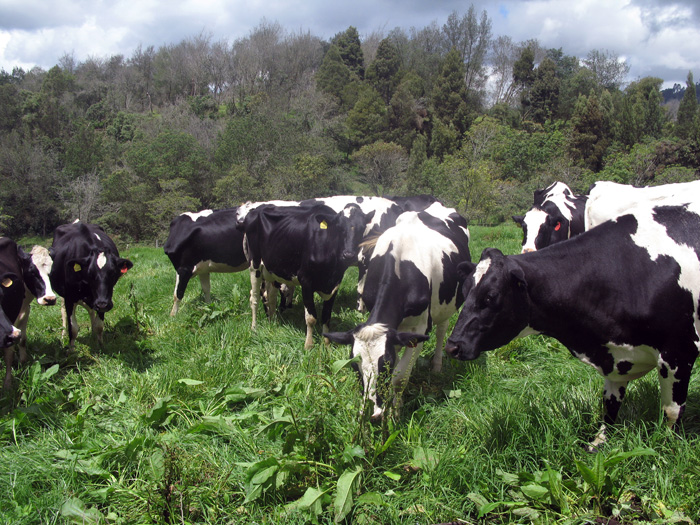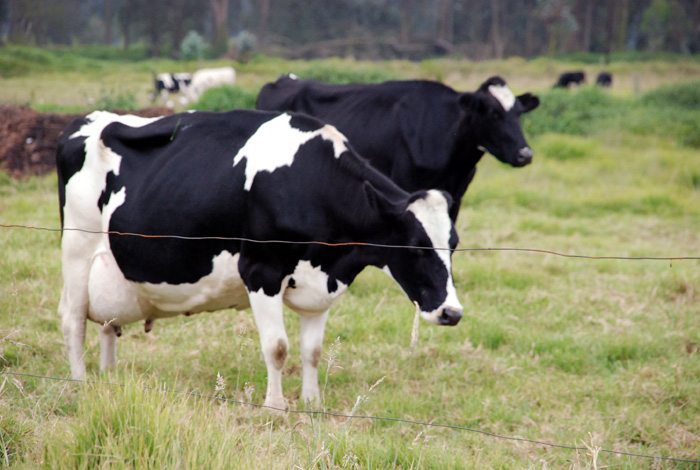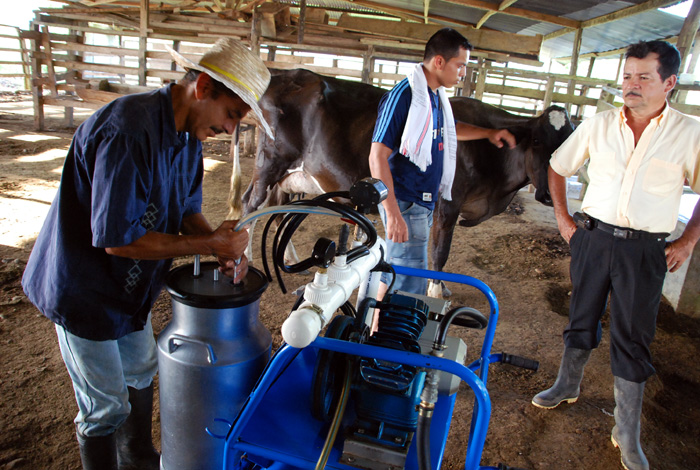Close to 600 farmers from Antioquia learned to analyze special characteristics of their daily labor, which are fundamental to determine, accurately, what bulls are suitable to transmit better characteristics to their offspring for improving the production.
This is the first program for bovines of herds in Colombia, which are not in the elite category, but are small and medium parcels with races as Holstein and jersey, which are greater in number. With support of the Ministry of Agriculture close to 20 thousand individuals are studied in 19 municipalities.
"In the countryside, the results are amazing and very representative in terms of trained people and improvement of lacteal derivatives," asserted Jose Julian Echeverri, a researcher from the group Biodiversity and Molecular Genetics of Universidad Nacional de Colombia in Medellin. The program is divided in two complementary lines: the quantitative genetic evaluation and the assessment based on molecular markers.
Closer to peasants
The quantitative method, which requires the permanent participation of milk producers, consists on estimating the genetic merit (superiority) of individuals both, in males and females.
Animals are identified, as well as their productive and reproductive characteristics. Every month, herds are visited to measure the milk production and to take samples to determine in the lab the percentage of fat, proteins and the number of somatic cells (responsible for the growth of tissues and organs), important aspects when determine the health of the udder and the quality of the milk. Universidad Nacional de Colombia is performing statistical analysis and providing this information to peasants.
Results show that a specimen inherits their offspring the capacity of producing milk in 20%, while percentages of fat and protein are close to 40%. "This means that we will have a better genetic development with the second characteristic," explained Jorge Quijano, a researcher at the Faculty of Agricultural Sciences.
The model, apart from using data such as year, month, herd, region, municipality and breading numbers, included the genetic value of the national or foreign origin of bulls. According to professor Quijano, 5,000 cows and 400 bulls are being studied.
Technology
The second line of work is characterized by molecular markers, segments of DNA that can be recognized and related to the inherited characteristic. With this method, genes of economic interest can be identified during the production of milk, such as prolactin, which stimulates the milk production; kappa casein, which prevents its coagulation, and the growth hormone. Also the bovine leukocyte antigen, a substance that provides resistance to diseases can be identified.
This technique will be applied to 2,500 animals that fulfilled the condition of having a known father. "If we do not know its origins, we are not capable of knowing what we are improving," asserted Researcher Albeiro López.
At the hand of society
The Researchers highlight as the main outcome the instauration of the Genetic Assessment Program, which demands a culture of identification, relocation and systematization of information by farmers.
The soul of the project is in the labor performed with the community. Peasants from 150 herds received training in artificial insemination, register management, animal improvement, molecular evaluation, productive and reproductive efficiency, among other topics.
Universidad Nacional de Colombia and Colanta Ltda, elaborated two programs to facilitate the processing and interpretations of data. The first called Control 1, easy to use, was created for farmers to systematize the information about herds. The second, called Genetic Evaluation, used by the researchers, organizes the information of Control 1.
The challenge is to maintain this initiative with the purpose of improving the productivity of cattle.
For reading the complete article, please visit
www.unperiodico.unal.edu.co/dper/article/lecheros-antioquenos-ordenan-genetica-bovina/index.html
 Correo Electrónico
Correo Electrónico
 DNINFOA - SIA
DNINFOA - SIA
 Bibliotecas
Bibliotecas
 Convocatorias
Convocatorias
 Identidad UNAL
Identidad UNAL





